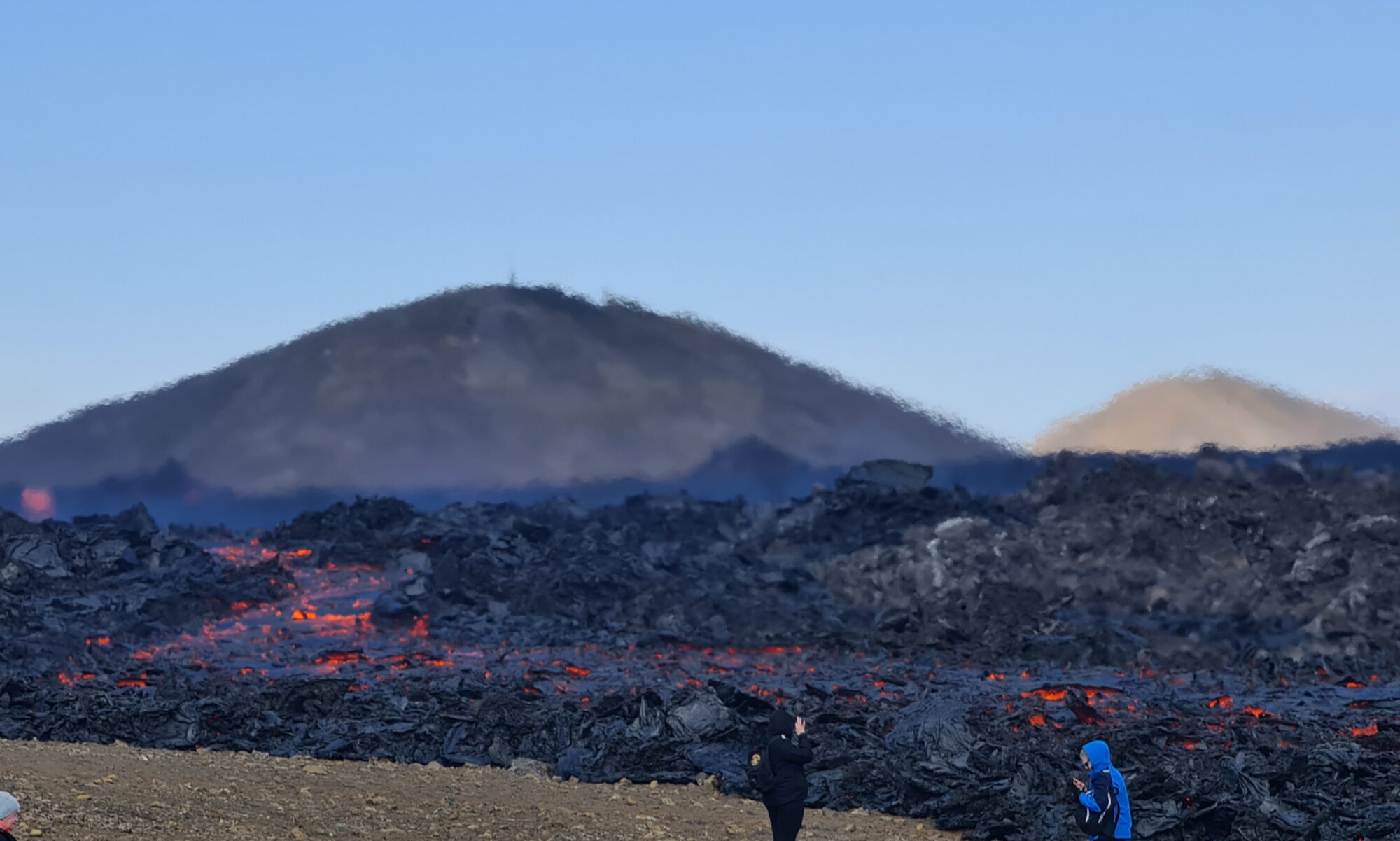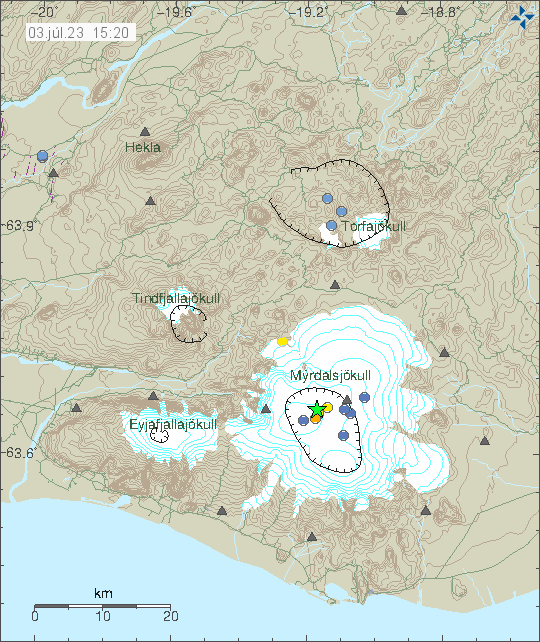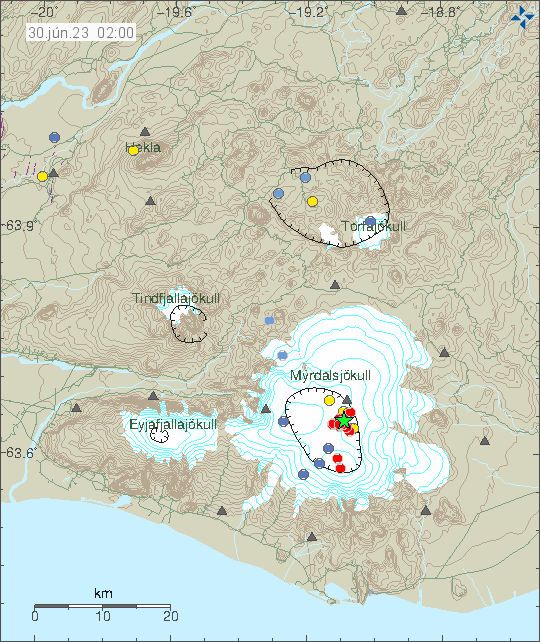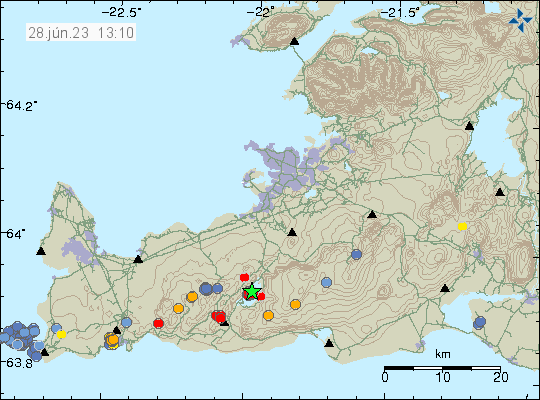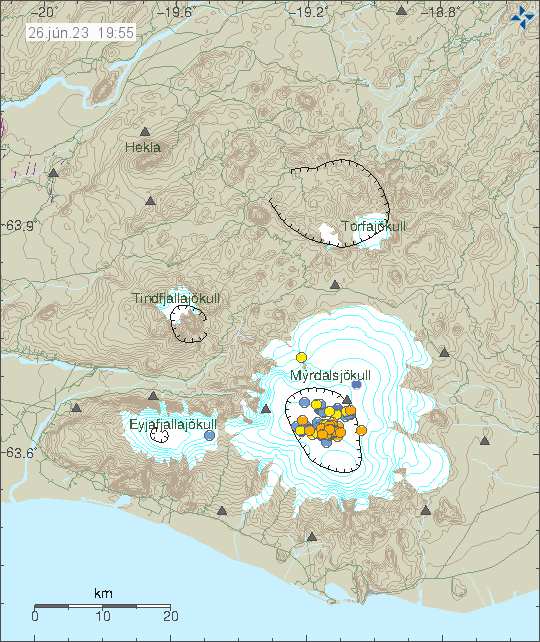It was in the news today (3. July 2023), since inflation has been detected from GPS data on Reykjanes peninsula since start of April. What was told in a interview on Bylgjan (radio channel) and later published on Vísir.is news website (link below, but the whole thing is in Icelandic) is that all of Reykjanes peninsula is inflating. What is also starting to show in the GPS data is that there might not be separate volcanoes on Reykjanes peninsula, this might also have happened in the year 2020 – 2021, before the first eruption in Fagradalsfjall mountain. All of Reykjanes peninsula might be one large volcano, extending from Hengill to Eldey or Eldeyjarboða, the south end might have uncertain location. This changes everything as that means that it can erupt at any location on the Reykjanes peninsula without warning and the whole area is now in an eruption cycle.
The current period of inflation started in April and is now at 2,5cm (25mm) and is centered at the last eruption location in Fagradalsfjall mountain. That means the most likely location of next eruption is going to be Fagradalsfjall mountain. This inflation is also going to trigger large earthquakes on Reykjanes peninsula in next few weeks to months until an eruption starts. Along with the normal amount of small earthquakes that have been happening since April on the whole of Reykjanes peninsula.
I don’t know when or how long it is going to take to change the official definition of the Reykjanes peninsula. Because this is going to require more research and data collection for the scientists in Iceland. This also means a lot of new science papers have to be published and peer-reviewed.
Icelandic news
Fólk á suðvesturhorninu má búa sig undir reglulega jarðskjálfta (Vísir.is)
